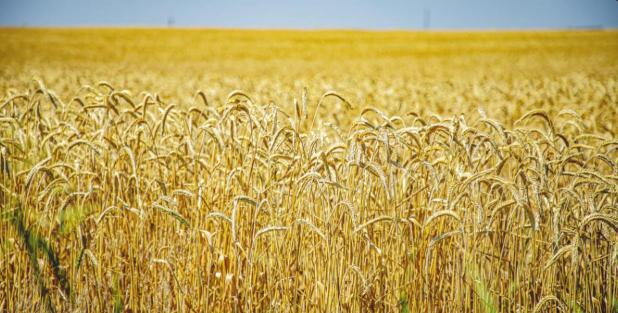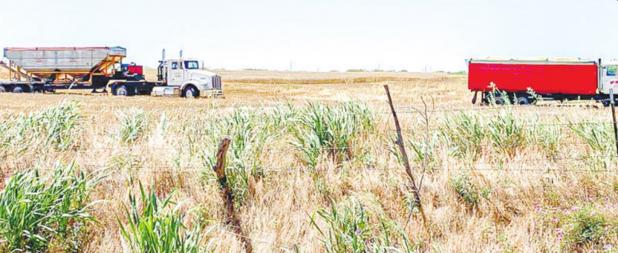

Triticale Harvest Completed
People have been noticing the land off Country Club Road and Highway 251 S., and they have expressed their curiosity about what his being grown there. This land—which has been in the family since 1880— is being leased to Sam Creel by Trina Wainwright Johnson for the production of Triticale (trit-ih-KAY-lee).
You may ask what is Triticale and why harvest it? Triticale is a hybrid of wheat and rye first bred in laboratories during the late 19th century in Scotland and Germany. Plant breeders originally wanted to include the combination of grain quality, productivity, and disease resistance of wheat with the vigor and hardiness of rye.
Each year during harvest season the combines come in along with the many workers who are needed to harvest the Triticale, which brings people in to fill up the local RV park here in Olney.
According to the census of agriculture there are close to 700 farms in Young County alone, producing more than $8 million on more than 523,000 acres of land per year, with wheat in a variety of forms being one of the top yielding crops.
In the 1960s, approximately 250,000 acres were grown annually in the United States, however markets did not develop as expected, particularly as a food. Today, there are only a few thousand acres grown and much of it is sold as a feed grain. Most of the production is in the western states. The southern states grow winter types which are grazed in the fall. In the Midwest there is some interest in using triticale as a forage crop. Plant breeders working with triticale hoped it would have higher yield than other cereal grains, especially under less than ideal growing conditions, and be used both as human and animal food.
The harvesting process for Triticale appears to be similar to that of wheat. The wheat trucks deliver the wheat to the storage units or commercial sites for shipping. Grain augers move the wheat from the trucks to the storage units and back out again when it’s time to ship the wheat. Finally, most recognizable to anyone passing though or living in rural areas with farms are silos, tall cylinder structures equipped with fans or fuel burners that aerate and dry the wheat. Without proper storing, wheat quickly becomes useless for processing. Grain elevators and bins are often equipped with machinery to sort and move the grain in order to facilitate even drying.
